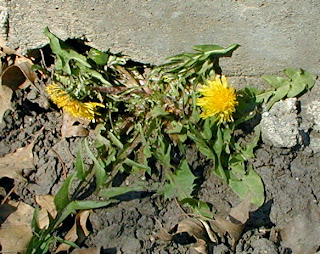 |
| August wildflowers, Victoria, Australia |
We have a variety of conventions for writing about plants that aren’t particularly obvious, probably because they lie at the intersection of science, language rules and everyday speech. These frequently mystify and frustrate people who otherwise love plants. I am planning posts that explain the rules as I know them. This one is about writing plant names.
 |
| dandelion |
Most plants have several names--minimally an English common name and a scientific name, but possibly several common names in each of several languages. Thus, the same plant is called: dandelion (English common name), Taraxacum officinale (scientific name) dent-de-lion, (French common name), achicoria silvestre (Spanish common name) and maskros (Swedish common name). Of course it also has a Dutch, Flemish, German, Italian--you get the picture--
common name as well. In addition, many languages have more than one common name for dandelions, plant books in English might mention blowball, cankerwort, wild endive and piss-i-beds, in Spanish amargon, diente de leon, and taraxacon. I’d say all of those are the plant’s real name: if, when you use a name, the person to whom you are speaking recognizes it, then that’s the whole point.
Rules for writing common names: modern English doesn’t capitalize common names of plants (or animals, tho bird specialists sometimes do capitalize bird common names). The plant common name has to conform to the rules of English, however, so if there’s a proper noun in the common name, it must be capitalized.






